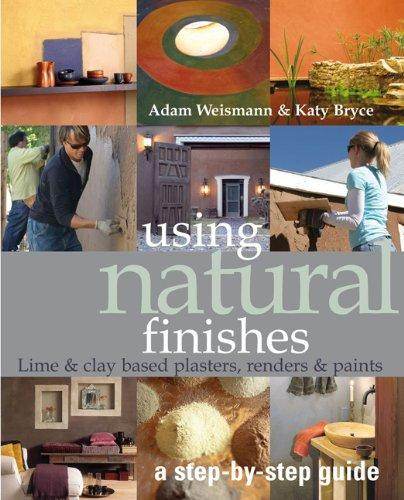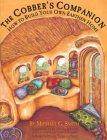There are some great online resources for cob-compatible earthen plasters, and some books worth checking out.
Carol Crews'
Clay Culture
has a great section on soft vs. hard finishes: basically, if you are doing a "soft" masonry form like cob, you need soft (breathable) finishes that won't trap moisture, or crack/blister themselves off the wall with the inevitable forces of temperature, moisture, and material settling/movement.
Let's see if I can find the Amazon links to books I own, and some online stuff.
The Natural Plaster Book, Guelberth & Chiras
Using Natural Finishes, Weismann & Bryce
The above are just plasters and finishes.
The following are short handbooks that have similar info (with less political essays) than the Hand-Sculpted House, and should contain basic info on earthen plasters and tools needed.
The Cobber's Companion (a Cob Cottage book, out of print)
The Cob Builder's Handbook, Becky Bee, self-published: there's an online copy
here, I think it's free or maybe honor-system.
Studio Melies is working on a DVD about natural plasters, which I can't wait to get.
For online resources:
I love Mike Wye's website for the extensive collection of articles about historic restoration and compatible modern workmanship.
http://www.mikewye.co.uk/faqs.htm
(I am a geek. I don't actually know if there's any actual plaster recipes there or not, but you will learn things about detailing that some of the current generation of cob-revival teachers don't know yet.)
More earthen architecture geekery:
http://whc.unesco.org/en/earthen-architecture/
Paints and pigments compatible with cob and natural plasters:
Milk Paint:
RealMilkPaint.com - they ask for a contribution if you find the recipe useful, honor system.
American Clay
Ochres & Oxides
Adding pigments to plasters:
http://www.earthpigments.com/plasters-cements/
(Note that you can also use any concrete pigment in cob, lime, or whatever: they are alkali-tolerant if you're using lime or Borax, and they are mostly the same mineral composition at a fraction of the price. The main differences would be toxicity, mostly in the blue/green/artificial tones, and for those I am willing to pay the premium for a non-toxic, ultramarine-type pigment from the natural sources.)
A great thread on "taadelakt," a waterproof Moroccan lime plaster, and the efforts to replicate it using locally available materials elsewhere:
https://permies.com/t/26216/Finishes/recipe-tadelakt
Hope that helps get you started!
For those who stopped by following links from the Rocket Stove forums, the one caveat I'd add is that some finishes don't do well with heat - notably beeswax, which gets soft and sticky again every time it warms up. We usually do the final finishes on heated cob benches with just a straight plaster mix, milk- or wheat-based hardeners, or an oil soap burnishing like a light-duty tadelaakt.
-Erica W









 1
1





 )
)
 1
1




 1
1








 2
2














